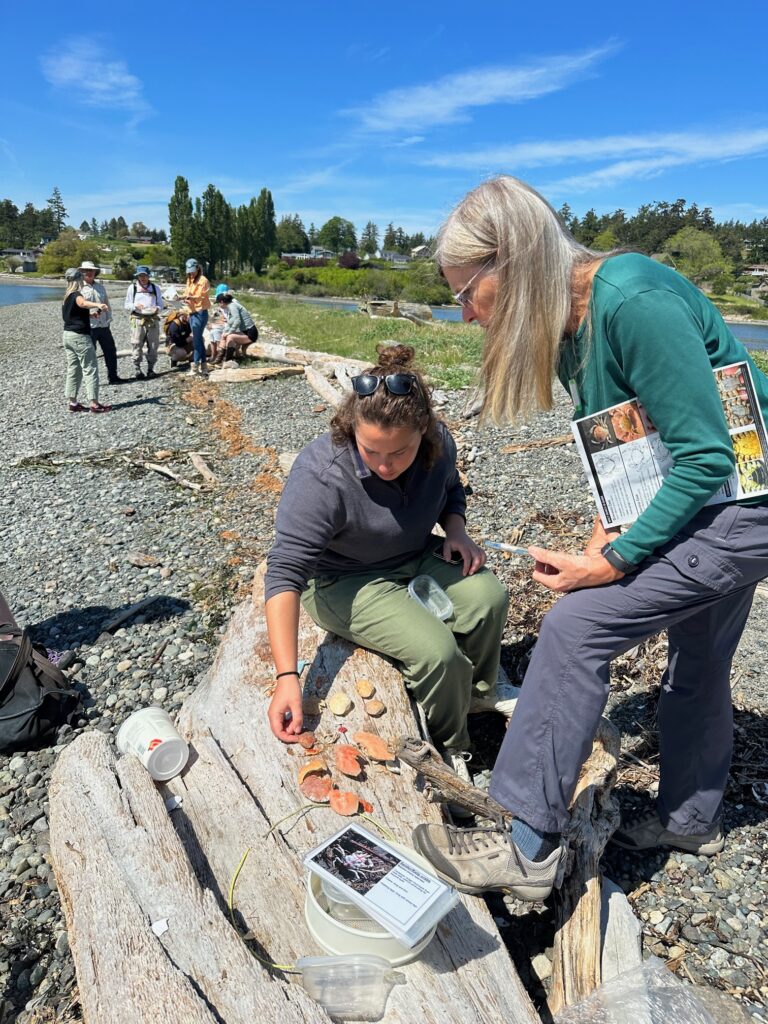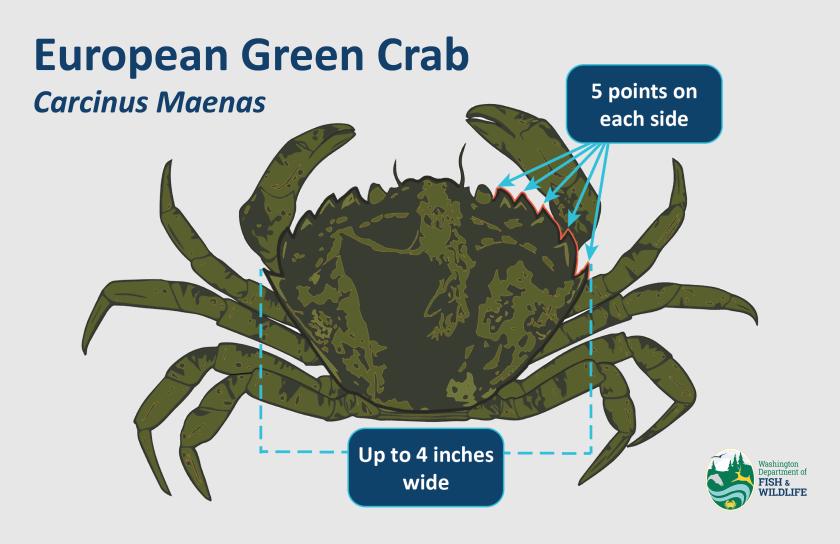Calling all nature enthusiasts, community scientists, volunteers, and beachgoers!
Help combat the growing concern and spread of a destructive menace to the islands and Salish Sea: the European green crab. Labeled one of the world’s worst invasive species by the Washington Department of Fish and Wildlife, this crab is staging an assault on our marine ecosystem.
But here’s where YOU come in! Molt Search empowers every individual to rise as a guardian of the Salish Sea. No cape needed, just a smartphone and a heart full of dedication. Our mission? Conduct a 20-minute survey for crab molts at select beaches throughout San Juan County. Armed with newfound knowledge and guided by an intuitive mobile app, community science volunteers turn detectives, uncovering and reporting crucial findings to combat this invasive menace and safeguard marine waters. Volunteers will learn how to conduct a systematic 20-minute survey for crab molts, how to properly identify the European green crab, how to take measurements of the invasive crabs as well as Dungeness crabs and how to report their findings using a mobile app.
Unleash your inner marine scientist and join the Molt Search team with Friends of the San Juans during a Molt Blitz, Friday, September 15th, 4pm to 6pm at Jackson Beach on San Juan Island
Join the ranks of dedicated defenders and let’s make waves together! For more details about Molt Search and Molt Blitz beach events in San Juan County, email Jess Newley, Community Science and Education Director at Friends of the San Juans via [email protected].


WDFW, Washington Sea Grant, tribal co-managers, and partners (a coalition known as The Crab Team) currently monitor and trap European green crab at about 60 sites. Still, these only cover a small fraction of the suitable nearshore habitat for this animal. The detection of European green crab molts could be an early indicator of the presence of European green crab in the area. If citizen scientists, volunteers, shoreline landowners, and beachgoers knew what to look for, they could provide valuable information that would help to guide future Crab Team monitoring and trapping efforts.
